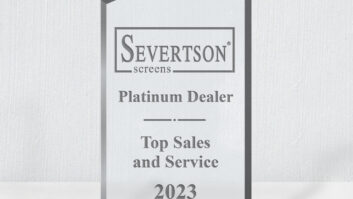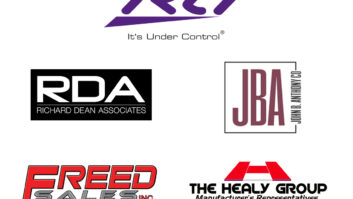Independent dealers could help level the playing field between themselves and their big-box competitors by employing a host of simple yet powerful merchandising and marketing techniques that carry little or no out-of-pocket costs.
That was the word from retail consultants Roy Brown and Harry Buntyn, who shared their tips with merchants at a Brand Source/AVB seminar held here during the buying group’s biannual convention last month.
Perhaps the most vital yet often ignored tool in a retailer’s arsenal, they argued, is the plan-o-gram: a detailed layout of the selling floor that provides a well-thought out game plan for the placement of products. Too often the arrangement of floor models reflects a lack of line logic, the partners said, which can be confusing to customers, a challenge to sales staffs, and wasteful in terms of advertising and promotional dollars.
“Some dealers just buy bits and pieces from various manufacturers, and the floor is a hodgepodge of different products that don’t have a flow or logical sequence,” Brown noted. In such stores, warehouse workers are sometimes left to choose products to fill holes on the display floor, often based simply on their color or accessibility.
For independents, a logical layout will enhance the shopping experience and better enable sales associates to step-sell through side-by-side comparisons — which is why it is also critical to clearly communicate the floor’s line logic to the sales team.
The plan-o-gram should also provide a place where sales promotions can be found on a regular basis. “You can’t go into a Sears store and not find a $399 special,” Brown continued. “Something is always $30 or $50 off.”
Taking a cue from Sears and Lowe’s, the duo suggested that dealers might highlight their specials with end-caps in high-traffic areas.
Back on the subject of step-selling, the consultants advised dealers to “think through” the process of “moving the consumer from point A to point B.” Taking another page from the Sears sales book, Buntyn said the No. 1 majap merchant “starts at the top of the line and steps customers down, taking features off. They still wind up ahead of the step-up approach.”
Regardless of sales approach, all customers need to be asked qualifying questions up front about the amount they are looking to spend and the features that they require in order to steer them to the right product quickly. “Consumers will only follow you for a couple of steps,” Brown warned.
An additional adage from Brown and Buntyn: use printed price tags rather than handwritten ones, as the former means “less negotiation” and the latter conveys that “this is a place where I could haggle.” To underscore the point, Brown noted that Brand Source president Bill Pleasants improved the bottom line of his business by 1 percent simply by using the group’s branded price tags in each of his five stores.













